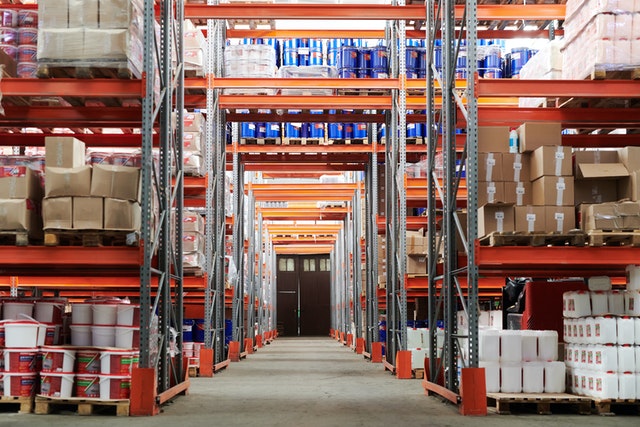Inventory Management vs. Warehouse Management: What’s the Difference?

This is a guest post by John Meyers.
As similar as they may sound, inventory management and warehouse management are not the same. They both incorporate operations and management of products that are part and parcel of the import, export, and distribution industries. Yet, the two terms entail some distinctive features and differences that are crucial to acknowledge if you want to run your business well. In fact, conflating the two processes might give rise to complex management issues in your supply chain. That is why it makes sense to distinguish between the two by taking careful notice of the differences.
In fact, both warehouse managers and business owners who rely on the import and export of goods benefit from differentiating between inventory management and warehouse management. The key advantage to relegating these two processes to different management systems lies in the opportunity to increase profitability as well as productivity. There are numerous ways this division of labor achieves this, but curtailing mistakes and delays in shipment due to ineffective logistics counts as a major benefit.
What Is Inventory Management?

Inventory management refers to a group of processes that relate mainly to supply chain management, predictions in terms of supply and demand, and the management and control of inventory itself. In most cases, it will precede the management that happens in the domain of warehousing.
In other words, inventory management contributes to the effective and timely management of inventory and logistics tools. These include safety stock or the suppliance of enough goods to satisfy demand, economic organization, and ordering of goods. In addition, close monitoring of suppliers and price of goods, the general inventory turnover for each facility you run, then customer-managed and vendor-managed inventory.
Hence, there is quite a lot that falls into the domain of inventory management. In that sense, sidelining inventory logistics can be quite damaging for an emerging business. What’s more, the success of small and medium-sized businesses depends on appropriate inventory management because it ensures careful, incremental planning, organization, and monitoring of the goods and tools you use for your business.
As a result, businesses minimize financial losses, particularly in terms of surplus inventory, rental of warehouse space, shipping costs and penalties, as well as reverse logistics.
What Is Warehouse Management?

As opposed to inventory management, warehouse management centers on managing the storage and transportation of goods within the warehouse itself. So, this would be the internal management of all the items, products, machines, materials, and other items that you store in a warehouse facility.
In order to do this successfully and efficiently, many warehouse managers rely on warehouse management systems (WMS). WMSs are systems or software that allow you to maintain centralized management of all warehousing that goes on. For instance, tracking inventory in terms of location and stock can go through the WMS.
You can use older WMS systems with basic functions such as storage location tracking. Otherwise, go for a more recent, advanced version to track parameters such as the volume of your goods and the scope of business operations. Typically, these processes require you to coordinate an entire warehouse management team. In that sense, a WMS management system can speed up the delegation and operationalization of these tasks.
However, keep in mind that inventory tracking within the warehouse does not entail the same processes as warehouse management. But first, the similarities.
What Are the Similarities Between Inventory Management and Warehouse Management?
Both of these processes use barcoding devices that allow businesses to manage goods. Once you set up your own tracking system, you can carefully monitor your warehouse capacities and stock of goods, pickup and packing dates and supplies, shipment status, pending orders, organization of storing locations…
The Difference Between Warehouse Management and Inventory Management
Realizing the difference between these managements, you are effectively minimizing the danger of human error since everything that comes and goes into your warehouse goes through a digital database as well as two distinct management frameworks. Ultimately, dividing the workload into external inventory management and internal warehouse management keeps everything professional, streamlined, and effective. In fact, this kind of division of labor is invaluable for emerging businesses as it allows a comprehensive overview of all aspects and stages in your enterprise’s storage, tracking, and supply management operations.

So, even though they both pertain to the management of your goods, the differences are still pronounced enough to justify the observance of both as separate processes in your workflow. In fact, the sheer complexity of warehouse management necessitates a modular approach to logistics planning.
Complexity and Range
Inventory management systems are typically simpler in scope and volume of work. Essentially, the principal task of your inventory management staff involves keeping tabs on the supply processes by listing the quantities of stored goods and items. Also, inventory management typically manages only a single location.
Zoom out and observe your business inventory through the lens of your entire warehouse network. In brief, that is what warehouse management systems take care of. So, you will deal with inventory management if you compartmentalize and delegate responsibilities to different warehousing units.
On the other hand, warehouse management allows you to observe your warehousing capacities from a top-down approach. In that sense, you have access to your entire warehousing system in all locations, as well as smaller sections and units within individual warehouses.
Different Types of Organization and Information on Goods
Another difference concerns the accuracy of tracking in that warehousing management locates the exact location of the item in your system. In contrast, inventory management only pays attention to whether and how many items the warehouse contains.
So, inventory management notes down the type and quantity of products and materials you are in possession of. However, you do not have immediate and comprehensive access to where and how the items are stored. Furthermore, warehousing management plays an important role in the management of operations in other departments.

This was a guest post by John Meyers.
Author Bio
John Meyers is a warehouse manager with 25+ years of experience working with logistics departments of import-export businesses across the country. In recent years, his professional expertise has focused on warehousing management for eCommerce businesses and transportation companies. Furthermore, he also collaborates with shipping, freight, and moving companies such as Family Affair Moving with the aim to establish the best logistics practices.




